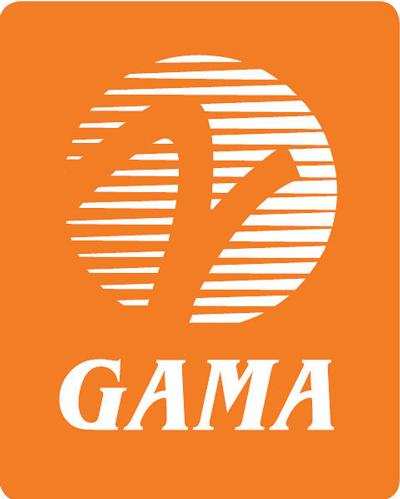Sensationalistic Series Does Not Acknowledge Progress Made By The Industry
It happens occasionally. A writer looking for something to write will turn his or her attention to GA, and the results are sometimes skewed, overstated, or even flat-out wrong.

They are presented to the public as factual "news."
Such seems to be the case with a three-part series appearing in USA Today under the title "Unfit for Flight" by Thomas Frank, which purports to examine GA safety. To read the story, you might come away with the perception of GA airplanes falling from the sky like a biblical plague of frogs resulting in daily fiery crashes all over the country.
In a statement, GAMA president and CEO Pete Bunce sought to set the record straight:
"Thomas Frank’s sensationalistic three-part series in today’s USA Today (Unfit for Flight, June 18, 2014) fails to acknowledge the significant progress general aviation manufacturers have made to improve safety," Bunce wrote. "The reality is that the number of fatal accidents in general aviation aircraft has declined substantially in recent years. In fact, the goal of 1 fatal accident per 100,000 hours flown by 2018 now appears increasingly likely.
"Aircraft manufacturers spend significant time and expense to ensure the safety of their aircraft. This process begins with a three-to-six year period in which the manufacturer demonstrates to the Federal Aviation Administration (FAA) that each design meets the applicable regulations. The tightly controlled aircraft design process results in a specific design approval--the type certified design, or TC—which applies only to that particular approved design that can then be produced. If a manufacturer wants to make something different, it must go through another safety review process for approval.
"In the event of a safety concern, the FAA most often issues an Airworthiness Directive (AD), which is a regulation that applies to a particular aircraft model. An AD can implement a new requirement on an existing aircraft design, as well as aircraft that have already been produced. The AD rulemaking tool allows the FAA to quickly address any safety issues in the existing fleet as well as existing designs that are being produced. ADs are an extremely effective way to ensure an airplane’s safety throughout its lifetime.

"Furthermore, the industry, along with the FAA and the National Transportation Safety Board (NTSB), continues to work to identify the leading causes of general aviation accidents and has taken major steps to mitigate the risks of these accidents occurring. The General Aviation Manufacturers Association (GAMA), along with other members of the General Aviation Joint Steering Committee (GAJSC)—a group of government, industry, and user groups dedicated to improving aviation safety—has pressed the FAA to streamline requirements governing the use of Angle of Attack (AoA) indicators in general aviation aircraft. AoA indicators can help pilots avoid losing control of the aircraft in flight, the primary cause of accidents. Thanks to these efforts, the FAA recently made it easier and more cost-effective for pilots to install AoAs. This initiative has the potential to have a significant impact toward combatting loss-of-control accidents. The GAJSC continues to develop other concrete improvements to
improve overall safety.
"As Mr. Frank notes, the average general aviation aircraft is now 41 years old. That’s why the FAA and industry partnered in 2011 to form the Part 23 Aviation Rulemaking Committee (ARC), a group of 150 government and industry experts who spent 18 months studying how to more efficiently and effectively introduce new safety technology into new and existing small general aviation airplanes. GAMA’s Greg Bowles co-chaired this effort. Congress and industry are now actively working to ensure the FAA implements the ARC’s recommendations. Last year, the U.S. House of Representatives and the U.S. Senate swiftly and unanimously passed the Small Airplane Revitalization Act, which requires the FAA to implement the ARC’s recommendations by December 2015. President Obama signed the bill into law last November. Both the House and Senate Appropriations Committees have recently endorsed language focused on ensuring the FAA meets the December 2015 deadline.
"In addition, GAMA co-chaired a committee to improve the Airman Certification Standards—the tests pilots are required to take to fly an airplane—to ensure that the questions pilots are asked more accurately reflect real-life scenarios they could confront in the cockpit. As Mr. Frank reports, the NTSB has cited pilot error in 86 percent of fatal general aviation accidents. This committee has sought to bring about a new and more straightforward approach to pilot training, and will help ensure that future generations of pilots are well-equipped to respond to challenges in the sky.
"As general aviation manufacturers, our top priority every day is to ensure the safety of pilots and passengers, and we are making great strides in doing so. An honest analysis of all the facts would have made this clear to Mr. Frank’s readers."
 Unfortunate... ANN/SportPlane Resource Guide Adds To Cautionary Advisories
Unfortunate... ANN/SportPlane Resource Guide Adds To Cautionary Advisories ANN FAQ: Turn On Post Notifications
ANN FAQ: Turn On Post Notifications ANN's Daily Aero-Term (04.29.24): Visual Approach Slope Indicator (VASI)
ANN's Daily Aero-Term (04.29.24): Visual Approach Slope Indicator (VASI) ANN's Daily Aero-Term (04.28.24): Airport Marking Aids
ANN's Daily Aero-Term (04.28.24): Airport Marking Aids ANN's Daily Aero-Linx (04.28.24)
ANN's Daily Aero-Linx (04.28.24)




